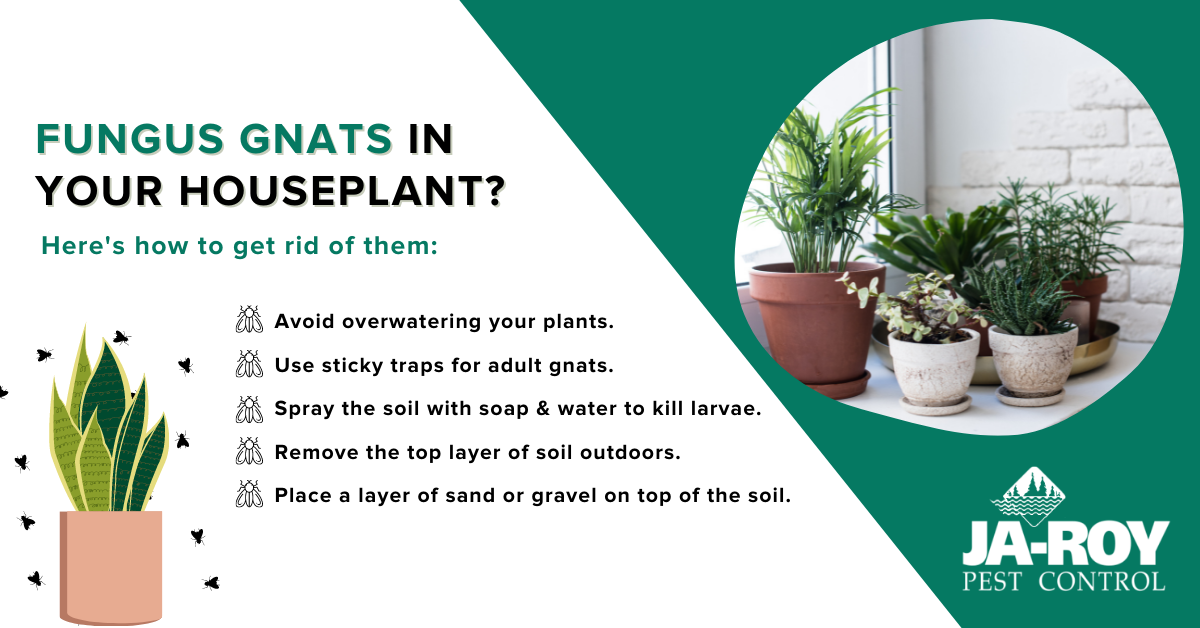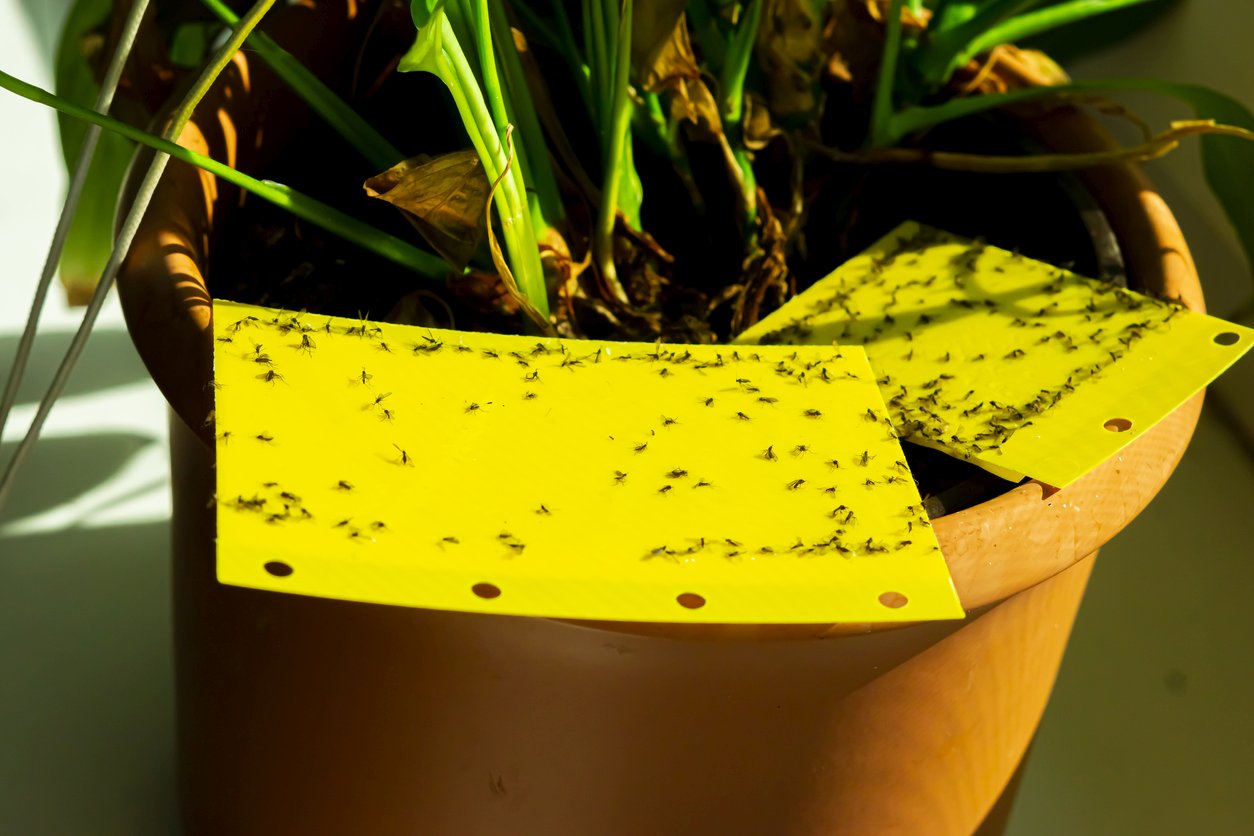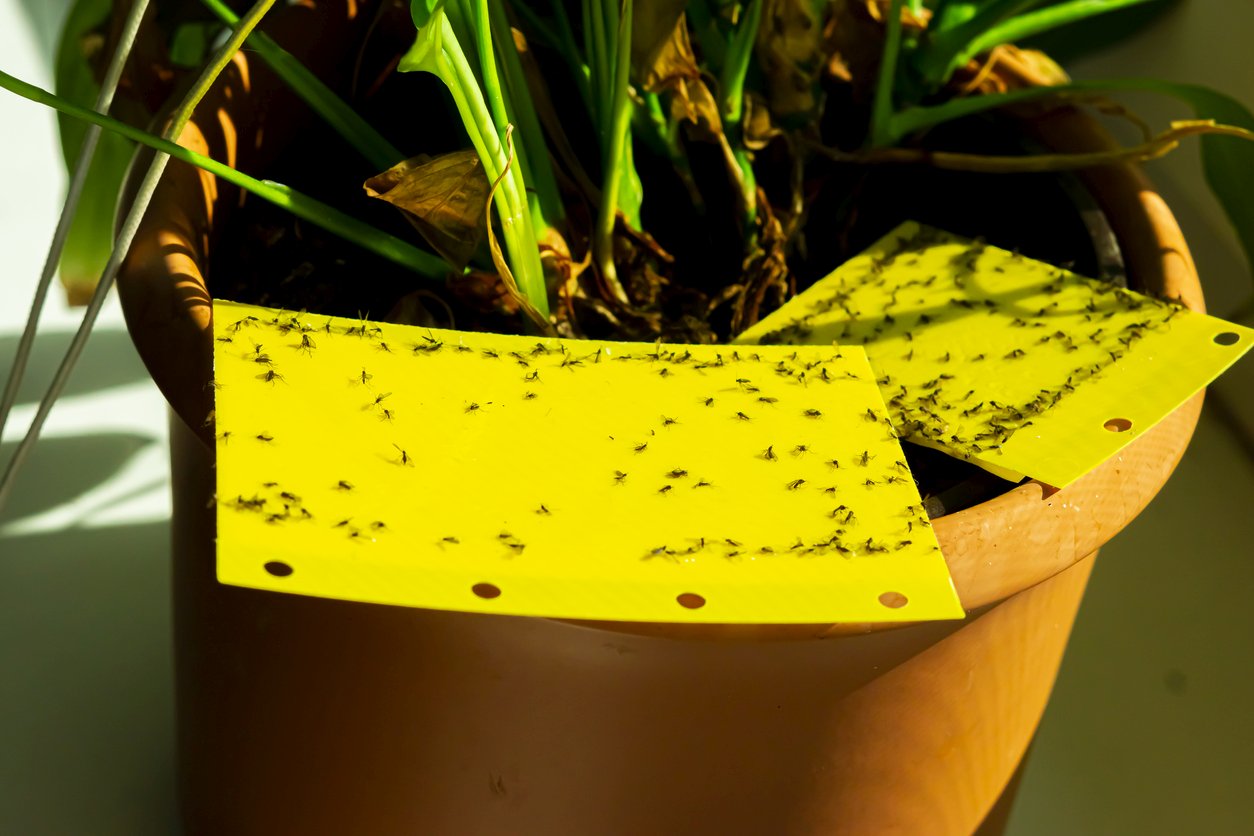How to Get Rid of Fungus Gnats in Your Houseplants: These tiny, pesky insects can quickly become a nuisance in your home, especially if you’re an avid houseplant enthusiast. Fungus gnats are attracted to moist soil and decaying organic matter, making your beloved houseplants a prime target.
They can damage your plants by feeding on roots and hindering their growth, leading to wilting and even death. But fear not, there are effective ways to combat these pesky invaders and reclaim your plant paradise.
This comprehensive guide will delve into the world of fungus gnats, exploring their life cycle, identifying signs of infestation, and offering a range of solutions, from natural remedies to chemical control. We’ll also cover preventative measures to keep your houseplants healthy and free from these unwanted guests.
Whether you’re a seasoned plant parent or a beginner, this guide will provide you with the knowledge and tools you need to effectively manage fungus gnat infestations.
Understanding Fungus Gnats: How To Get Rid Of Fungus Gnats In Your Houseplants
Fungus gnats are tiny, dark-colored flies that are commonly found in homes, particularly around houseplants. They are often mistaken for fruit flies, but they have a distinct lifecycle and feeding habits. Understanding the life cycle, the conditions that attract them, and the potential harm they can cause to plants is crucial for effective control.
Fungus Gnat Lifecycle
Fungus gnats undergo a complete metamorphosis, meaning they transform through four distinct stages: egg, larva, pupa, and adult.
- Egg:Female fungus gnats lay tiny, white eggs in moist soil, typically near the surface. Eggs hatch within a few days, depending on the temperature and humidity.
- Larva:The larvae, also known as “maggots,” are small, white, worm-like creatures that feed on decaying organic matter in the soil, such as fungi, algae, and roots. This stage can last for several weeks.
- Pupa:After the larval stage, the larvae pupate, forming a brown, hard shell. The pupa stage can last for a few days to several weeks, depending on the temperature.
- Adult:Adult fungus gnats are small, dark flies with long legs and antennae. They typically live for only a few days and their primary purpose is to reproduce. Adult fungus gnats feed on nectar and other sugary substances, but they do not cause significant harm to plants.
Fungus gnats are a common pest in houseplants, attracted to moist soil and decaying organic matter. To combat them, you can try using a yellow sticky trap or introducing beneficial nematodes to your soil. If you’re looking for a more proactive approach, consider adding some fast-growing hanging plants to your home, like the ones listed in 5 Fast-Growing Hanging Plants to Try.
These plants can help improve air circulation and reduce humidity, making your home less attractive to fungus gnats.
Conditions that Attract Fungus Gnats
Fungus gnats are attracted to damp, decaying organic matter, making houseplants an ideal breeding ground.
- Overwatering:Excessive watering creates a consistently moist environment that promotes fungal growth, providing a food source for fungus gnat larvae.
- Poor Drainage:Soil that doesn’t drain well retains excess moisture, creating a breeding ground for fungus gnats.
- Organic Matter:The presence of organic matter, such as compost, leaf litter, or decaying plant material in the soil, attracts fungus gnats.
- High Humidity:Warm, humid environments, particularly those with poor ventilation, are conducive to fungus gnat breeding.
Potential Harm to Plants
While adult fungus gnats are not a direct threat to plants, their larvae can cause damage.
- Root Damage:Fungus gnat larvae feed on roots, potentially weakening the plant and making it more susceptible to disease.
- Stunted Growth:Root damage can lead to stunted growth, as the plant struggles to absorb nutrients and water.
- Wilting:Severely damaged roots may result in wilting, as the plant is unable to take up sufficient water.
Preventing Fungus Gnats

Fungus gnats are attracted to moist environments, so preventing them from thriving in your houseplants requires creating conditions that are less appealing to them. This involves adjusting your watering practices, using the right potting mix, and ensuring good air circulation around your plants.
Proper Watering Techniques
The key to preventing fungus gnats is to avoid overwatering your plants. Overwatering creates a moist environment that fungus gnats love, and it can also lead to root rot, which further attracts these pests. Here are some tips for proper watering:
- Water only when the top inch of soil is dry.You can test this by sticking your finger into the soil. If it feels dry, it’s time to water.
- Water thoroughly but don’t let the soil become soggy.Allow excess water to drain out of the drainage holes in the pot.
- Avoid watering from the top.This can lead to waterlogging and create a breeding ground for fungus gnats. Instead, water from the bottom by placing the pot in a tray of water for 15-20 minutes.
Benefits of Well-Draining Potting Mix
A well-draining potting mix is essential for preventing fungus gnats. It allows excess water to drain away quickly, preventing the soil from becoming too moist. A good potting mix will contain a balance of ingredients, such as peat moss, perlite, and vermiculite, that promote drainage.
Maintaining Good Air Circulation
Fungus gnats thrive in stagnant air, so ensuring good air circulation around your plants is important. This can be achieved by:
- Placing plants in a well-ventilated area.Avoid placing them in corners or areas with limited airflow.
- Using a fan to circulate air.A small fan can help to create a gentle breeze around your plants, preventing the buildup of humidity.
- Spacing plants appropriately.Overcrowding can create a humid environment that attracts fungus gnats.
Natural Methods to Control Fungus Gnats

Fungus gnats are a common pest in houseplants, but you can control them naturally without resorting to harsh chemicals. Several effective methods can help you reduce their population and prevent them from returning.
Comparing Natural Remedies for Fungus Gnat Control
The following table compares and contrasts different natural remedies for fungus gnat control:| Method | Advantages | Disadvantages ||—|—|—|| Yellow Sticky Traps| Easy to use, inexpensive, non-toxic | Can attract other beneficial insects, may not be effective against large infestations || Diatomaceous Earth| Effective against larvae, non-toxic | Can be messy, needs to be reapplied regularly || Neem Oil| Broad-spectrum insecticide, effective against both adults and larvae | Can be harmful to some plants, needs to be diluted properly || Apple Cider Vinegar| Attracts and traps adults, non-toxic | May not be effective against larvae || Beneficial Nematodes| Target larvae directly, environmentally friendly | Requires specific application conditions, may not be effective against adults || Hydrogen Peroxide| Kills larvae, non-toxic | Can bleach soil, needs to be diluted properly |
Effectiveness of Yellow Sticky Traps
Yellow sticky traps are a popular method for controlling fungus gnats. They work by attracting the adult gnats to their bright yellow color, which they find irresistible. Once the gnats land on the trap, they become stuck and unable to escape.Yellow sticky traps are most effective when used in combination with other methods, such as removing excess moisture from the soil and treating the larvae.
They are also a good way to monitor the gnat population and determine the effectiveness of other control measures.
Fungus gnats are a common pest for houseplant enthusiasts, often drawn to the moist soil of potted plants. While eliminating these pesky insects can be a challenge, preventing them from taking hold in the first place is key. One strategy is to opt for well-draining soil and avoid overwatering.
If you’re looking to add some vertical greenery to your home, consider growing hanging plants from seeds. How to Grow Hanging Plants from Seeds offers a comprehensive guide to starting your own hanging plant collection. With a little care and attention, you can enjoy beautiful, pest-free hanging plants that will brighten up any room.
Using Beneficial Nematodes to Combat Fungus Gnat Larvae, How to Get Rid of Fungus Gnats in Your Houseplants
Beneficial nematodes are microscopic worms that prey on fungus gnat larvae. They are a natural and effective way to control the larvae before they can develop into adults.To use beneficial nematodes, you need to purchase them from a garden center or online retailer.
The nematodes come in a powder or liquid form and are usually applied to the soil around the base of the plants. The nematodes will then search for the fungus gnat larvae and infect them, eventually killing them.For best results, apply the nematodes when the soil temperature is between 60 and 80 degrees Fahrenheit.
Water the soil thoroughly before and after application to help the nematodes move through the soil and reach the larvae.
Important Note:Beneficial nematodes are most effective against larvae, so they may not be effective against adult gnats. It is best to use them in combination with other methods, such as yellow sticky traps, to control the entire population.
Epilogue

By understanding the habits and vulnerabilities of fungus gnats, you can effectively prevent and control infestations. From adjusting watering practices to implementing natural remedies, there are numerous strategies to keep your houseplants healthy and thriving. Remember, a proactive approach is key to maintaining a fungus gnat-free environment, ensuring your plants flourish and your home remains a haven for both you and your greenery.
Questions Often Asked
What is the best way to get rid of fungus gnat eggs?
The most effective way to eliminate fungus gnat eggs is to address the moist conditions that attract them. Allow the top inch of soil to dry out between waterings, and consider using a well-draining potting mix. You can also try using beneficial nematodes, which prey on fungus gnat larvae, to disrupt the life cycle.
Can I use vinegar to get rid of fungus gnats?
Vinegar can be an effective natural remedy for fungus gnats. Mix equal parts water and apple cider vinegar in a shallow dish and place it near your plants. The vinegar attracts and traps the gnats.
Are fungus gnats harmful to humans?
Fungus gnats are not known to bite or sting humans, and they don’t carry diseases. However, they can be a nuisance and may trigger allergies in some individuals.
